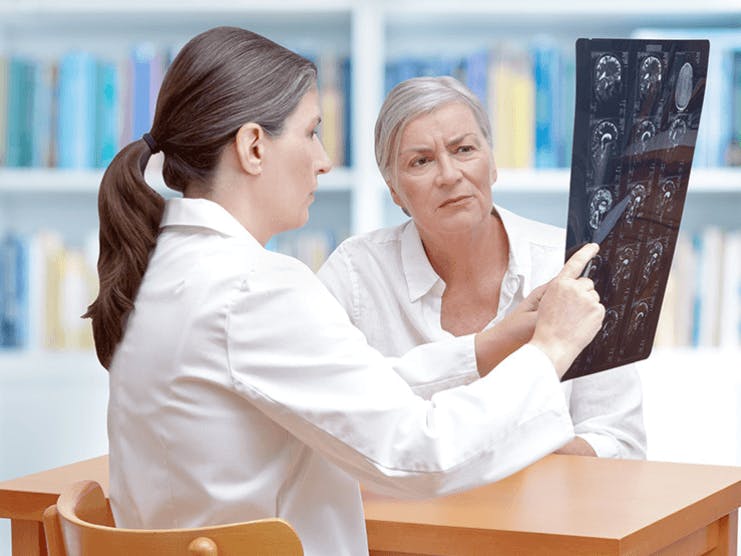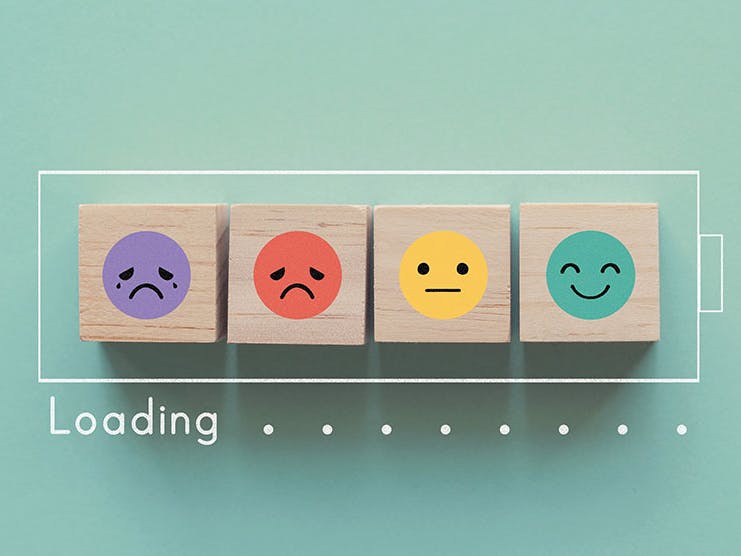
Sometimes, speed really matters. That’s definitely true when someone is having a stroke – the fifth leading cause of death in the country.
A stroke, sometimes called a brain attack, is when a blood vessel to the brain either bursts or becomes blocked. When you have a stroke, an area of your brain loses the oxygen and nutrients it needs. If there’s not enough blood for long enough, that area may be damaged or die. After a stroke, you might have trouble walking, talking, or eating. In fact, stroke is the leading cause of disability in the U.S., according to the American Stroke Association.
A stroke is an emergency. The faster you figure out it’s a stroke and get help, the better the odds for recovery. In fact, speed is so critical that doctors call the first 60 minutes after a stroke the golden hour.
Types of stroke
There are two major types of stroke:
- The most common type is ischemic stroke, when a blood vessel to the brain becomes blocked. This type causes 87% of all strokes.
- Hemorrhagic stroke is far less common. That’s when a blood vessel suddenly ruptures and there’s bleeding in the brain.
There’s also something called a mini-stroke. The official name is transient ischemic attack (TIA). That’s when blood flow to the brain is blocked for a short time. A TIA causes symptoms just like a stroke, but they tend to go away in a few minutes. Even though a TIA doesn't cause permanent damage, it can mean that a major stroke is coming. That’s why it’s important to get medical help for any stroke symptoms, even if they vanish.
What are the signs of stroke?
So what should you be looking for? The Centers for Disease Control and Prevention (CDC) lists these five warning signs:
- Sudden numbness or weakness in the face, arm, or leg, especially on only one side of the body
- Sudden confusion, trouble speaking, or difficulty understanding speech
- Sudden trouble seeing in one or both eyes
- Sudden trouble walking, dizziness, loss of balance, or lack of coordination
- Sudden severe headache with no known cause
Don’t dismiss these signs as just being tired or some kind of annoying blip. Any of these symptoms is a reason to call 911.
A quick test for stroke
Do you really need to call 911 for a headache or dizzy spell? Of course, it might not be a stroke. There’s a simple way to tell the difference: The F.A.S.T. test. It takes only a minute to do. One warning: You might not be able to spot these signs in yourself, and you could think you’re just fine when you’re not. But they’re easy for someone else to see.
- F = Facial drooping: Can the person smile? Does one side of the mouth droop? Is the smile uneven?
- A = Arm weakness: Have them raise both arms. Does one arm drift down?
- S = Speech difficulties: Can they speak clearly? Is their speech slurred?
- T = Time to call 911: Act immediately if you see any of these signs.
Get to know F.A.S.T. It’s a simple acronym that can save a life.
The “golden hour”: why time matters
Every minute counts after a stroke. If a blood clot is causing the stroke, you can get powerful drugs known as thrombolytics that can dissolve it. These drugs can get blood back to the brain, saving brain cells. That can mean much less disability.
Thrombolytics do the most good if you get them in the golden hour – those first 60 minutes after a stroke. They aren’t as helpful later, but they may still help. So get treatment as quickly as you can.
The longer a stroke goes untreated, the more likely it is to cause long-term disability and brain damage. Call 911 immediately when you see the signs of a stroke.
How to not have a stroke
Of course, it’s even better to avoid having a stroke at all. The same steps that you take for heart health can help lower your risk. Here are eight great habits the American Heart Association (AHA) recommends:
- Know your risk level by using AHA’s Check. Change. Control. Calculator
- Eat a healthy diet
- Exercise
- Stay at a healthy weight
- Avoid tobacco
- Get treated for health conditions like high blood pressure, blood sugar, and cholesterol – and follow what your doctor says to do to keep them in check
- Take all medicine as directed
- Work with your healthcare providers to maintain your health
These steps can help you lower your risk of stroke and can also help you sleep better, have more energy, and just feel better, too. You win with all of them!
How is stroke covered by Medicare?
For people who’ve had a stroke, Medicare covers much of the care that’s “medically necessary.” Part A covers stays in a hospital or rehab center, and up to 100 days in a skilled nursing facility. Part B covers rehab visits, such as physical, occupational, and speech therapy, along with durable medical equipment, which means things like wheelchairs, walkers, or canes. Drug costs are covered by Medicare Part D.
In some parts of the country, you can join a Medicare Advantage Special Needs Plan (SNP). SNPs are designed for people with long-term health problems, including the issues after a stroke. An SNP will cover items like seeing specialists and the typical meds needed.
Do you have Medicare questions? We have answers.
Medicare plans come in many different types. At ClearMatch, it’s our mission to match you to the policy that best serves your needs. It’s all we do, and we do it better than anyone. Check out our extensive library of articles for answers to your Medicare questions. Or, compare plans in your area to get started finding the policy that’s right for you.
Additional resources
About Stroke
External Web Link
Stroke Signs and Symptoms
External Web Link
6 Ways to Prevent Heart Disease
Internal Web Link
Speak with a Licensed Insurance Agent
Mon-Fri 8:00am-8:00pm | Sat 9:00am-5:00pm EST



